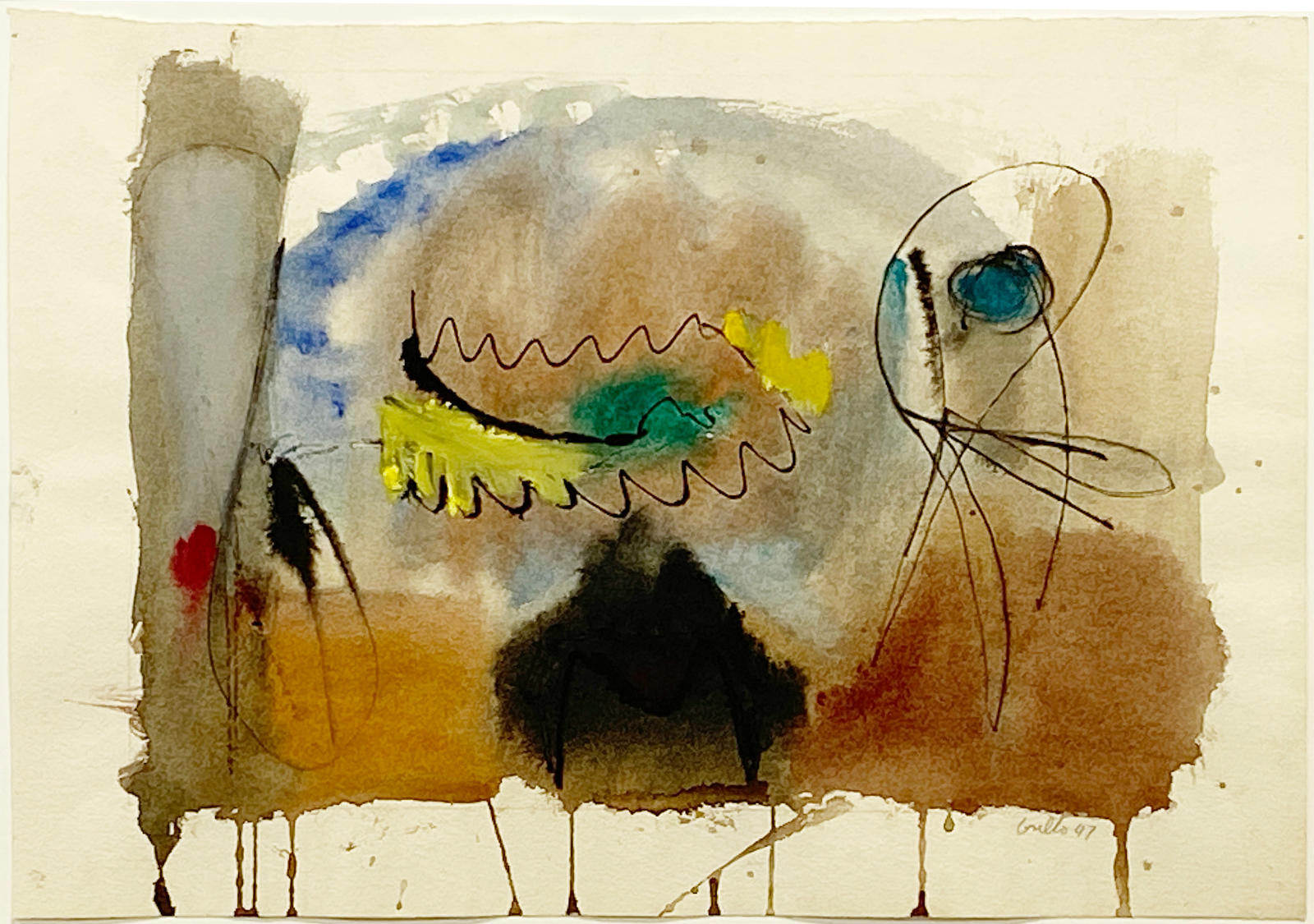artist
John Grillo is known as one of the greatest Abstract Expressionist painters to have emerged on the postwar artistic stage. In "Art in the San Francisco Bay Area" Thomas Albright pronounced John Grillo as "perhaps the first and purest 'action painter' on the West Coast and one of the most influential painters of San Francisco's school of Abstract Expressionism". He went on to play a seminal role in the post war Bay Area Abstract Expressionist movement that would revolutionize and forever change American Art. In 1948, Grillo left San Francisco for New York City, where he enrolled in Hans Hofmann's school of painting. Hofmann and Grillo were kindred spirits, sharing a mutual respect for one another's work that was similar in color and expression. Hofmann even owned a number of Grillo's works in his personal collection.
Upon Grillo's returned to the East Coast, he was welcomed into the fold of New York's avant-garde. Sam Hunter, reviewing his solo exhibition of San Francisco work at the Artist's Gallery for The New York Times in 1948, singled Grillo out as a leading figure, writing: "His painting acknowledges no allegiance to tradition, exists in a moment of intensity of explosive abstraction." The same year Grillo arrived in New York he had his first one-man show at the Artist's Gallery. He was also selected for the signal show, "15 Unknowns" at the Kootz Gallery in 1950. He worked for over six decades as a painter, sculptor, printmaker, and art instructor, and is remembered, as critic Donald Kuspit notes, as "the leading master of the second generation of Abstract Expressionists."
Description
This watercolor is full of life – the drips and splatters seem as though we can catch a glimpse of the artist over 60 years ago. A 1964 oral interview with Grillo is preserved at the Smithsonian Archives of American Art in which the artist describes his first years back from the war and his time at the California School of Fine Art. Grillo describes being preoccupied by the visual memories of Shanghai, China and Okinawa, Japan – “In a color sense I think there was a certain atmospheric, nostalgic feeling about the Orient. I felt there was something unfulfilled in me – there was something that I would like to explore.” At this time, Grillo’s desire to move away from the norm was lauded and respected. The artists move toward the abstract introduced a new level of self-expression.





















